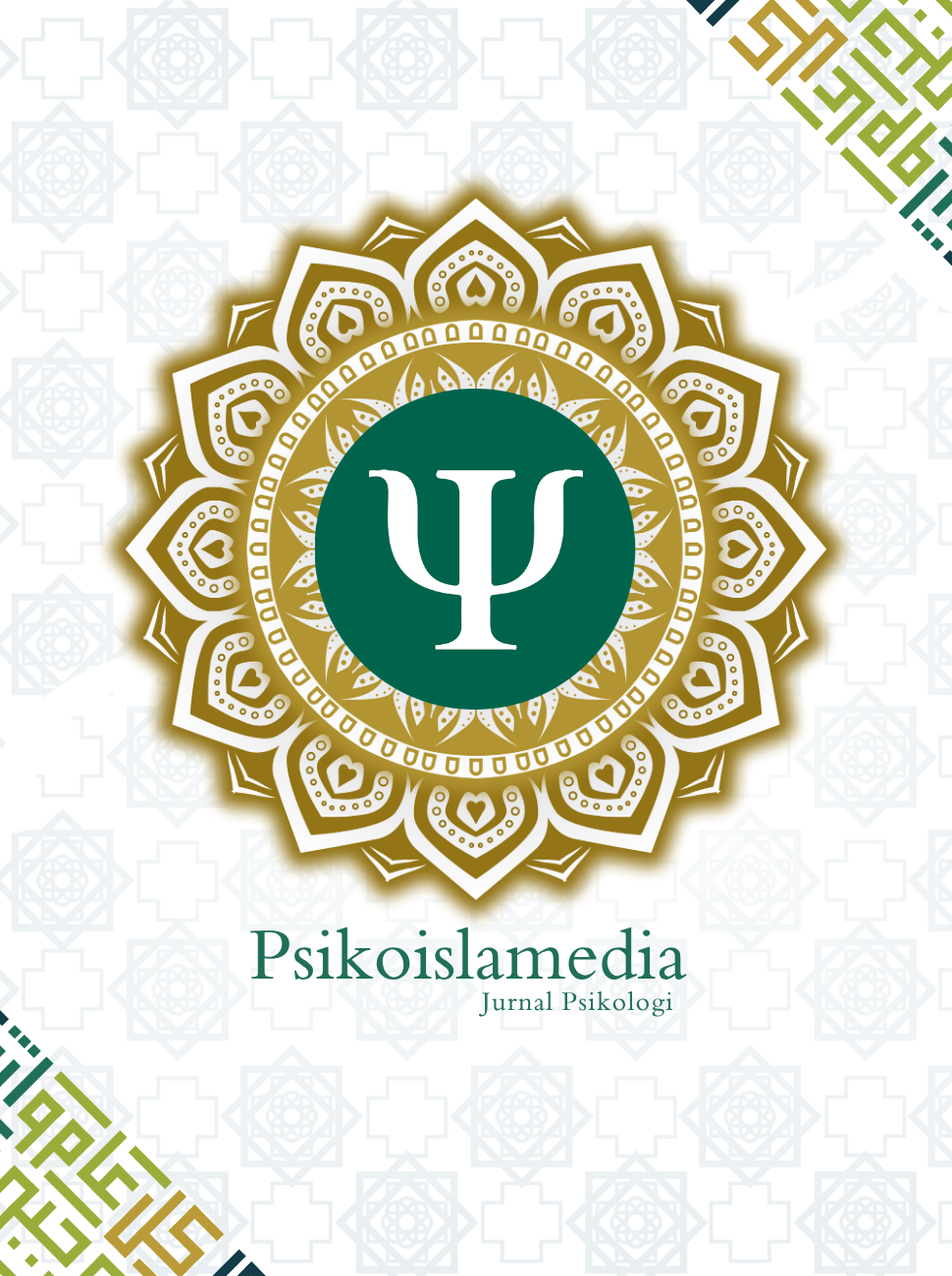Intervensi Psikososial Untuk Menurunkan PTSD dan Meningkatkan Resiliensi Warga Penyintas Bencana Tanah Longsor di Banjarnegara
DOI:
https://doi.org/10.22373/psikoislamedia.v3i1.5208Keywords:
Landslide Disaster, PTSD and ResilienceAbstract
The landslide disaster in Jemblung, Sampang, Karangkobar, Banjarnegara, Central Java, caused massive losses, 95 dead and 13 others missing, many wounded and loss of agricultural land and property rights and infrastructure damage. Initial assessment showed that after 9 months of the disaster, most of the survivors who participated in the study still showed symptoms of PTSD and a low level of resilience. Based on these data, this research is aimed to decrease PTSD and increase resilience among disaster survivors through psychosocial intervention. The study design is action research, involving 25 survivors. Data obtained through PTSD scale and resilience scale, analyzed by Wilcoxon-sign test statistic. Interview and observation data were analyzed qualitatively. The results showed a significant decrease in the symptoms of PTSD Z = -1,994 (p = 0.046; p <0.05), but no significant increase found in resilience score Z = -0.890, (p = 0.373; p> 0.05 ). the results of qualitative analysis showed the survivors started showing the spirit to restart the routine of making a living by producing snacks but some of the survivors had not been involved because they were still afraid to face the risks of changing jobs from farmers, so they still need further assistanceReferences
Ahmed, A.S.,(2007), Post-traumatic stress disorder, resilience and vulnerability,Advances in psychiatric treatment Vo.13,369-375.
Ballenger-Browning, K. & Johnson, D.C., (2010), Key fact on resilience, San Diego CA : Naval Center for Combat & operational Stress Control.
Ehrenreich, J. H. & McQuaide, S. (2001), Coping with Disasters: A guidebook to psychosocial Intervention (revised edition), New York: John H. Ehrenreich, Center for Psychology and Society.
Glover, J., (2009). Bouncing back: How can resilience be promoted invulnerable children and young people?, diakses pada tanggal 11 Nopember 2012 dari http://www.barnardos.org.uk/ bouncingback_resilience _march09.pdf
Henderson, N. Dan Milstein,M.M,. (2003). Resiliency in schools: making it happen for students and educators, California : Corwin Press,Inc.
Keim, M.E. (2002), Building human resilience: the role of public health preparadness and response as anadaptation to climate change, American Journal of preventive medicine, 2008, 35 (5).
Kharismawan, K, (2011), Panduan program psikososial paska bencana, Semarang: center for trauma recovery unika soegijapranata.
Kompas.com (15 Desember 2014), Ini Penyebab Longsor di Banjarnegara Menurut BNPB, diakses pada Senin, 17Desember 2014 | 16:31 WIB
Math. S.B., Nirmala, M,C., Moirangthem, S dan Kumar N., (2015), Disaster management:mental health perspective, Indian journal of psichological medicine, 2015; 37(3): 261–271.
Pranoto, S., dkk (2011), Lesson learned: pembelajaran rehab rekon pasca gempa di Sumatra Barat 30 September 2009, building back better, Padang: Pilar Karya.
Ranke , U. (2015), Disaster risk management: Geosciences and social responsibility, New York: Springer
Resnick, B., Roberto, K.A., & Gwyther, L.P. (editors) 2011. Resilience and aging : conceps, research and outcomes, New York : Springer Science Business Media.
Ronan, K.R. & Johnston, D.M. (2005), Promoting community resilience in disasters: The Role for Schools, Youth, and Families, New York: Springer Science.
Santiago, P.N., Ursano, R.J., Gray, C.L., Pynoos, R.S., Spiegel, D., Lewis-Fernandez,R., Fredman, M.J., dan Fullerton, C.S. (2013), A systematic review of PTSD prevalence and trajectories in DSM-5 defned trauma ecxposed population, Plos One, April 2013, Volume 8, Issue 4
Schmuck, R.A. (1997). Practical Action Research for Change. USA: Skylight Training and Publishing , Inc.
Shaikh. A., & Kauppi, C., (2010). Deconstructing Resilience: Myriad Conceptualizations and Interpretations, International Journal of Arts and Sciences, 3 (15): 155-176.
Tiefenbacher, J. (2012), Approaches to managing disster-assessing hazards, emergencies and disaster impacts, Rijeka: In-tech.
Wilson,J. & Keane, T (eds), (2003), Assessing Psychological Trauma and PTSD : A Practitioners’s Handbook (2nd ed.,) New York: Guilford
Downloads
Published
Issue
Section
License
Authors who publish in this Journal agree to the following terms:
- Authors retain copyright and grant the journal right of first publication with the work simultaneously licensed under Attribution-ShareAlike 4.0 International (CC BY-SA 4.0) allows others to share the work with an acknowledgment of the work's authorship and initial publication in this journal.
- Authors are able to enter into separate, additional contractual arrangements for the non-exclusive distribution of the journal's published version of the work (e.g., post it to an institutional repository or publish it in a book), with an acknowledgment of its initial publication in this journal.
- Authors are permitted and encouraged to post their work online (e.g., in institutional repositories or on their website) prior to and during the submission process, as it can lead to productive exchanges, as well as earlier and greater citation of published work. (See The Effect of Open Acces)














